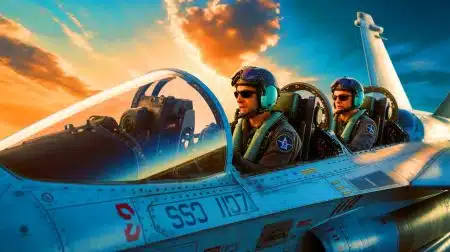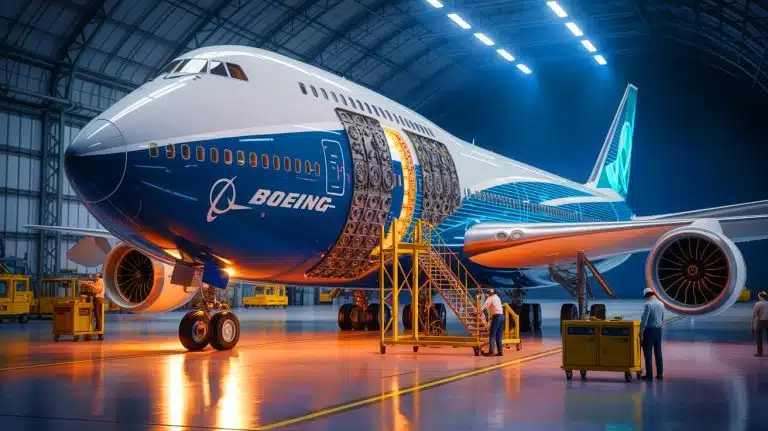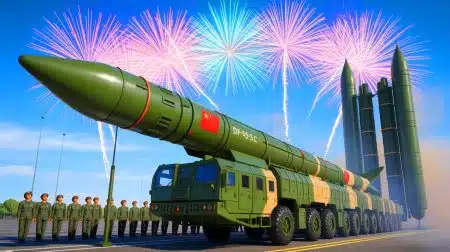| IN A NUTSHELL |
|
In recent months, the Trump administration found itself in the midst of a controversy centered around a seemingly generous gift from Qatar: a Boeing 747-8 intended to serve as the new Air Force One. Initially celebrated as a diplomatic success, this aircraft has now become a political and financial quagmire. Critics are voicing concerns that the costs associated with adapting this plane to the stringent requirements of a presidential aircraft could skyrocket to nearly $1 billion. The implications of this expenditure have sparked heated debates about financial priorities and strategic credibility within the U.S. government.
The Transformation of Air Force One
The newly gifted Boeing 747-8 is far from ready to serve as Air Force One. Extensive modifications are required to meet the unique demands of a presidential aircraft. These changes include the installation of ultra-secure communication systems, enhancements against electronic attacks, and the addition of missile defense shields. Moreover, the interior must be redesigned to align with the luxurious aesthetic preferences of the Trump administration. Each of these elements comes with significant costs.
While officials from the U.S. Air Force have suggested a budget cap of $400 million for these modifications, experts and lawmakers remain skeptical. Some sources indicate that the true cost, shrouded in secrecy, could well exceed $934 million, potentially reaching $1 billion. As these expenses mount, questions arise about the necessity and prudence of such an investment, particularly when considering the aircraft’s anticipated service life.
Political and Financial Backlash
The financial implications of transforming the Boeing 747-8 into Air Force One have not gone unnoticed by political opponents. The decision to reallocate funds from the Sentinel program, initially intended for modernizing the U.S. nuclear missile arsenal, has provoked significant controversy. This program, which had an original budget of $77.7 billion, has already ballooned to $140 billion, providing a cushion for additional expenditures like this aviation endeavor.
Jeanne Shaheen, a Democratic senator from New Hampshire, voiced her concerns about this budgetary maneuver, stating that diverting funds from a critical nuclear program to finance a prestige project undermines U.S. strategic credibility. Her sentiments echo the unease felt by many in Congress, particularly within the Senate, over the potential mismanagement of military resources.
Operational Challenges and Delays
The challenges facing the new Air Force One do not end with its financial burden. The aircraft’s modifications are to be undertaken in Texas at a highly secure facility that specializes in handling sensitive programs. However, these upgrades are expected to be time-consuming, raising concerns about the plane’s operational viability. By 2029, the aircraft may already be considered obsolete, with plans in place for its eventual retirement to a presidential museum.
Adding to the complexity is the fact that two other Air Force One aircraft, ordered from Boeing, are already behind schedule. These delays reportedly influenced Donald Trump’s decision to accept the Qatari gift despite numerous warning signs. The situation has created a logistical puzzle, as the administration must now balance the demands of multiple aircraft projects.
Strategic Implications and Future Considerations
The decision to accept and modify the Qatari Boeing 747-8 has broader implications beyond financial and political concerns. It raises questions about the strategic direction of U.S. military and diplomatic engagements. By allocating substantial resources to this aircraft, the administration may be signaling a shift in priorities that could affect other critical programs.
This development also underscores the need for transparent decision-making processes, especially when national security and taxpayer dollars are at stake. As discussions continue in Congress and among defense experts, the future of this aircraft remains uncertain. The controversy has prompted a reevaluation of the balance between prestige and practicality in government expenditures.
The saga of the new Air Force One encapsulates the complexities of modern governance, where diplomacy, finance, and national security intersect. As the U.S. navigates these challenges, one question remains: How will future administrations reconcile the competing demands of prestige projects and strategic necessities?
Did you like it? 4.5/5 (30)







Wow, a $400 million “gift” sure comes with a hefty price tag! 🎁💸
Is this really the best use of $1 billion when there are so many other pressing needs?
How does this impact U.S. relations with Qatar? 🤔
Why is it always the Sentinel program that gets its funds redirected?
Could the Air Force One modifications actually cost more than $1 billion? 😮
Thank you for shedding light on this complex issue. It’s eye-opening!
Do we really need a “palace in the sky” for the President?
Of course, Trump would want a lavish plane. Typical. 🙄